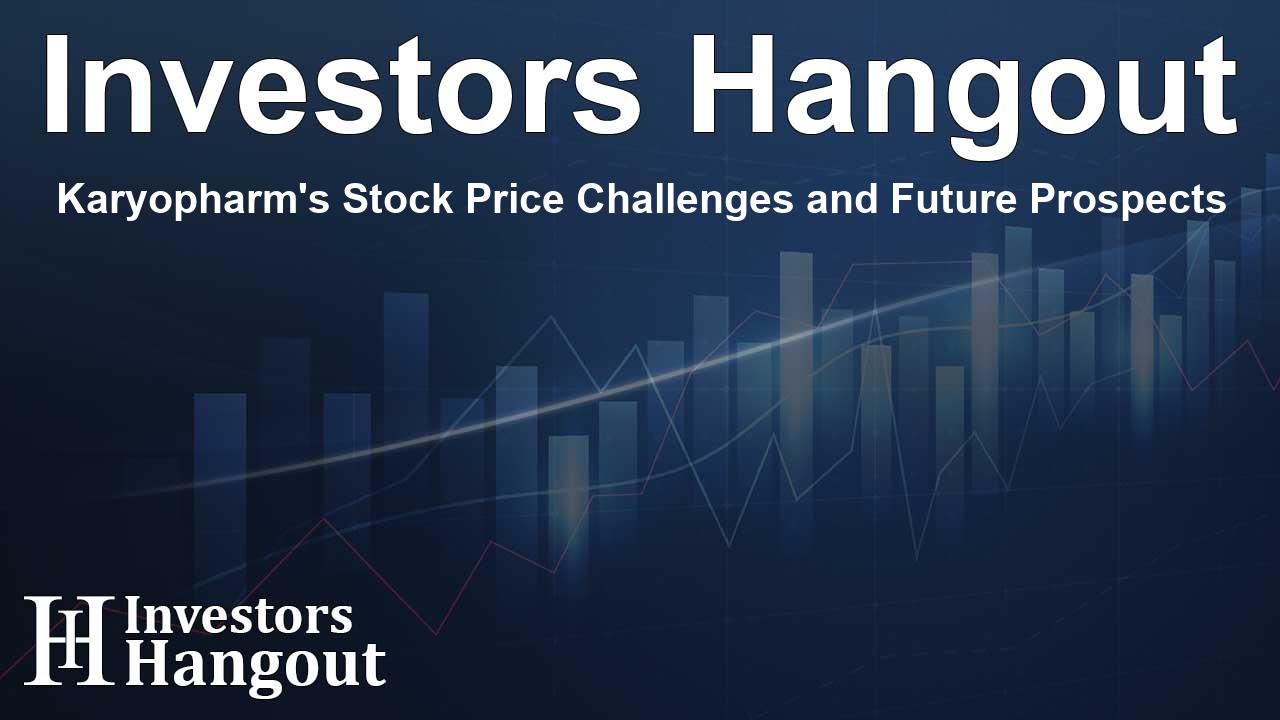Karyopharm's Stock Price Challenges and Future Prospects

Karyopharm's Stock Price Challenges Explained
Karyopharm Therapeutics (NASDAQ: KPTI) is facing a significant challenge as it has received notice from Nasdaq regarding its stock price dipping below the required minimum bid. This situation places the company at risk of being delisted from the Nasdaq Global Select Market. Being based in Newton, MA, Karyopharm focuses on innovative pharmaceutical preparations that provide treatments for various conditions.
Recently, Nasdaq informed Karyopharm that its stock price has been below the $1.00 threshold for over 32 business days. According to Nasdaq's Listing Rule 5450(a)(1), maintaining a certain bid price is essential for a company's continued listing on the exchange.
Understanding the Delisting Process
While the notification is concerning, Karyopharm has a grace period to address this issue. Nasdaq regulations afford the company a 180-day window to elevate its bid price back to $1.00 or higher for ten consecutive business days. This period, which will conclude in approximately March 2025, allows Karyopharm the chance to implement strategies aiming to restore its stock price.
Should further action be necessary, Karyopharm can receive an extension of another 180 days by transferring its listing to the Nasdaq Capital Market, effectively providing more time to boost its stock price while adhering to remaining listing standards.
Strategic Considerations for Compliance
The company is exploring various avenues to meet the Nasdaq requirements. One potential strategy might involve executing a reverse stock split, a method some companies use to increase their share price by reducing the total number of outstanding shares. Karyopharm's management is committed to closely monitoring its stock performance and evaluating all options to regain compliance with Nasdaq's bid price rule.
However, it's important to acknowledge that there's no certainty regarding success, prompting Karyopharm to remain proactive in addressing stock market realities.
Recent Company Developments
In addition to the stock market situation, Karyopharm has recently encountered notable internal changes. The company announced that Michael Mason, its Executive Vice President and Chief Financial Officer, will resign on November 5, 2024. This transition is significant, as Karyopharm seeks a qualified individual to step into this role, ensuring that all financial operations continue smoothly during this critical time.
Analysts' Financial Outlook
Several analysts have weighed in on Karyopharm's financial future. H.C. Wainwright made notable amendments to Karyopharm's price target, adjusting it from $8.00 down to $7.00 while still maintaining a Buy rating. This demonstrates a level of confidence in Karyopharm's potential, despite some underlying concerns about the increase in diluted share count anticipated in 2024.
Funding and Financial Health
RBC Capital has also expressed optimism, keeping its Outperform rating intact for Karyopharm. Analysts highlighted the future sales potential of the drug selinexor, with projections indicating U.S. sales might reach between $400-500 million. The company's recent debt restructuring efforts have further bolstered this positive perception.
InvestingPro Insights on Karyopharm
Investors may consider additional insights provided by InvestingPro, particularly concerning Karyopharm's recent challenges. Reports indicate that the company's market cap sits at around $94.14 million, with an impressive gross profit margin of 89.19%. However, concerns linger regarding a notable cash burn rate and the expectation that the company may not reach profitability this year.
However, there are indicators of optimism as four analysts have recently revised their earnings upward, suggesting a potential positive turn. Furthermore, Karyopharm's liquid assets appear adequate to cover short-term obligations, providing the company with some flexibility as it navigates these challenges.
Frequently Asked Questions
What triggered Nasdaq's notification to Karyopharm?
Karyopharm was notified due to its stock price falling below the $1.00 minimum bid price for over 32 business days.
How long does Karyopharm have to rectify their stock price?
Karyopharm has a 180-day period to raise its stock price to $1.00 or higher for ten consecutive business days.
What might Karyopharm consider if they don’t meet the requirements?
The company may consider implementing a reverse stock split and could receive an additional 180 days if they transfer to the Nasdaq Capital Market.
What recent leadership changes have occurred at Karyopharm?
The Executive Vice President and CFO, Michael Mason, will resign in November 2024, and the company is actively seeking his successor.
What is the outlook from analysts regarding Karyopharm's stock?
Analysts maintain varied ratings, with some adjusting price targets while highlighting potential sales growth opportunities for specific drugs like selinexor.
About Investors Hangout
Investors Hangout is a leading online stock forum for financial discussion and learning, offering a wide range of free tools and resources. It draws in traders of all levels, who exchange market knowledge, investigate trading tactics, and keep an eye on industry developments in real time. Featuring financial articles, stock message boards, quotes, charts, company profiles, and live news updates. Through cooperative learning and a wealth of informational resources, it helps users from novices creating their first portfolios to experts honing their techniques. Join Investors Hangout today: https://investorshangout.com/
Disclaimer: The content of this article is solely for general informational purposes only; it does not represent legal, financial, or investment advice. Investors Hangout does not offer financial advice; the author is not a licensed financial advisor. Consult a qualified advisor before making any financial or investment decisions based on this article. The author's interpretation of publicly available data shapes the opinions presented here; as a result, they should not be taken as advice to purchase, sell, or hold any securities mentioned or any other investments. The author does not guarantee the accuracy, completeness, or timeliness of any material, providing it "as is." Information and market conditions may change; past performance is not indicative of future outcomes. If any of the material offered here is inaccurate, please contact us for corrections.